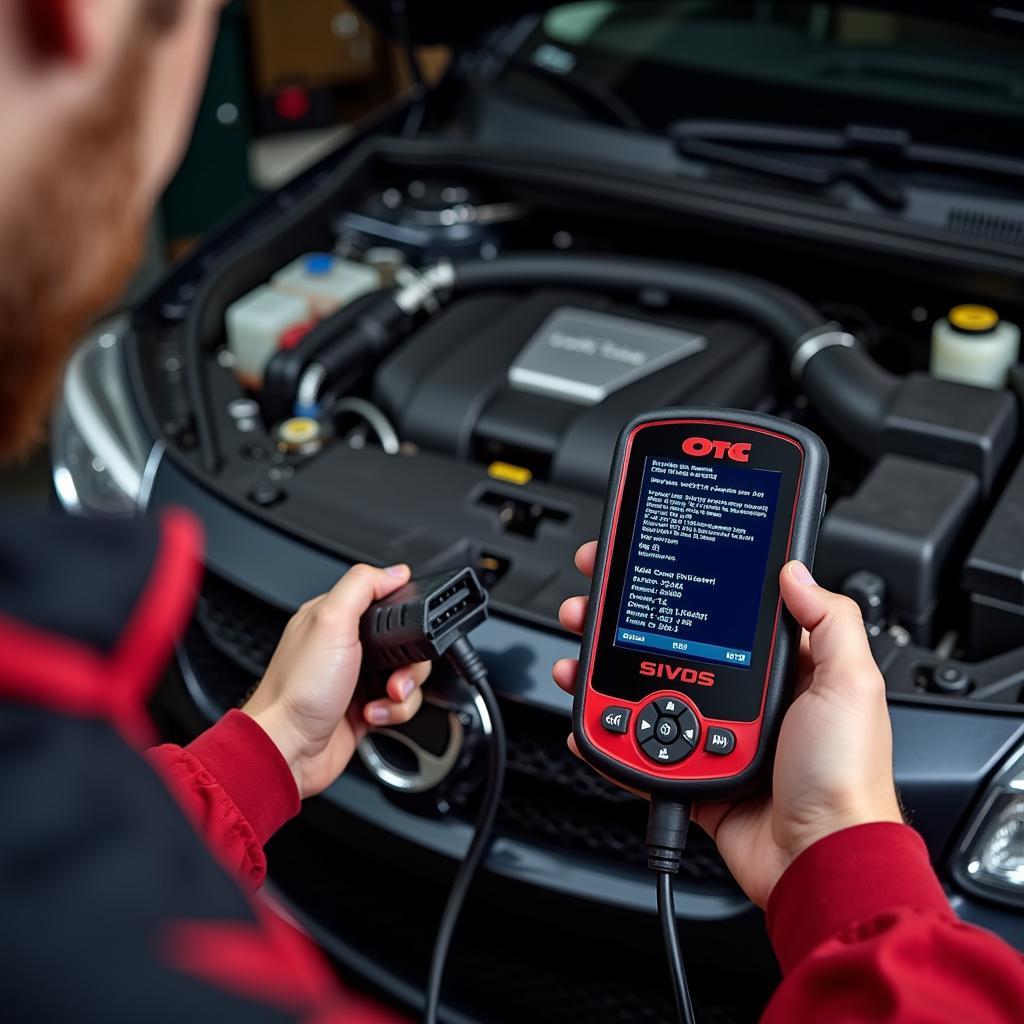Adjusting your car’s idle speed might seem like a minor tweak, but it can significantly impact performance and fuel efficiency. Many car owners and even some mechanics wonder if a bi-directional scan tool can be used for this adjustment. The short answer is: often, yes. Can idle speed be adjusted with a bi-directional scan tool? Let’s dive into the details and explore the possibilities.
Understanding Idle Speed and Its Importance
Idle speed refers to your engine’s RPM (revolutions per minute) when the car is in neutral or park and no accelerator pedal input is applied. A properly adjusted idle speed is crucial for smooth operation, optimal fuel consumption, and preventing stalling. Various factors can affect idle speed, such as engine temperature, electrical load, and the condition of components like the throttle body and IAC (Idle Air Control) valve.
Can Idle Speed Be Adjusted with a Bi-Directional Scan Tool? A Detailed Look
A bi-directional scan tool, unlike a basic code reader, allows you to not only read diagnostic trouble codes but also command and control various vehicle systems. This functionality makes it a powerful tool for diagnosing and addressing a wide range of issues, including idle speed problems. In many modern vehicles, the idle speed is controlled electronically by the Engine Control Module (ECM). A bi-directional scan tool can communicate with the ECM, allowing you to access and potentially modify the target idle speed.
Using a Bi-Directional Scan Tool for Idle Speed Adjustment
While the specific steps may vary depending on the vehicle make, model, and scan tool software, the general process involves connecting the scan tool to the vehicle’s OBD-II port, selecting the appropriate vehicle and engine type, and navigating to the idle speed control settings within the ECM data.
- Connect and Power Up: Connect the bi-directional scan tool to the vehicle’s OBD-II port. Turn the ignition key to the “on” position without starting the engine.
- Select Vehicle Information: Enter the correct vehicle year, make, and model into the scan tool. This ensures the tool communicates with the ECM correctly.
- Access ECM Data: Navigate to the “Engine Data” or “Powertrain” section of the scan tool software.
- Locate Idle Speed Control: Look for parameters related to idle speed, such as “Target Idle Speed,” “Desired RPM,” or “IAC Duty Cycle.”
- Adjust Idle Speed (If Possible): If the scan tool allows adjustment, you can typically input a new target idle speed value within a specified range. Caution: Incorrect adjustments can negatively affect engine performance.
- Monitor and Test: After making any adjustments, monitor the engine’s idle speed using the scan tool’s live data display. Test drive the vehicle to ensure the idle is smooth and stable.
“A bi-directional scan tool offers greater control over vehicle systems compared to a standard OBD-II code reader, enabling precise diagnostics and adjustments, including idle speed correction in many vehicles.” – Robert Miller, Automotive Electronics Engineer
When a Bi-Directional Scan Tool Might Not Be Enough
While powerful, a bi-directional scan tool can’t fix all idle speed problems. Mechanical issues like vacuum leaks, faulty IAC valves, or a dirty throttle body require physical repairs. The scan tool is a diagnostic aid, not a magic bullet. It can help pinpoint the underlying cause but not necessarily fix it directly.
Troubleshooting Idle Speed Problems
If you’re experiencing idle speed issues, a systematic approach is key.
- Check for Codes: Start by scanning for diagnostic trouble codes related to idle speed control.
- Inspect Vacuum Lines: Look for cracks, leaks, or disconnected vacuum hoses.
- Clean the Throttle Body: A dirty throttle body can disrupt airflow and affect idle speed.
- Test the IAC Valve: A faulty IAC valve can prevent proper idle speed regulation.
“Remember, addressing idle speed issues effectively requires a combination of diagnostic tools and practical mechanical knowledge.” – Susan Chen, Automotive Diagnostic Technician
Conclusion
Can idle speed be adjusted with a bi-directional scan tool? In many cases, yes. A bi-directional scan tool can be a valuable asset for diagnosing and adjusting idle speed issues in modern vehicles. However, it’s essential to understand its limitations and remember that mechanical problems often require physical repairs. By combining the power of a bi-directional scan tool with sound mechanical knowledge, you can effectively tackle idle speed problems and ensure smooth, efficient engine performance. For further assistance or questions, feel free to contact ScanToolUS at +1 (641) 206-8880 or visit our office at 1615 S Laramie Ave, Cicero, IL 60804, USA.
FAQ
- What is a bi-directional scan tool? A bi-directional scan tool can both read and send commands to a vehicle’s control modules, allowing for more in-depth diagnostics and adjustments.
- Can I adjust the idle speed on any car with a scan tool? Not all vehicles allow idle speed adjustment through a scan tool. Older vehicles may have mechanical adjustments.
- What are the common causes of rough idle? Common causes include vacuum leaks, dirty throttle bodies, faulty IAC valves, and sensor problems.
- Is it safe to adjust idle speed myself? Incorrect adjustments can negatively impact engine performance. If unsure, consult a qualified mechanic.
- What should my car’s idle speed be? The ideal idle speed varies depending on the make and model. Consult your vehicle’s owner’s manual.
- What if my idle speed fluctuates? Fluctuating idle speed can indicate a problem with the IAC valve, throttle position sensor, or vacuum system.
- Can a bi-directional scan tool help diagnose other engine problems? Yes, it can be used to diagnose a wide range of engine issues, including misfires, fuel delivery problems, and sensor malfunctions.

